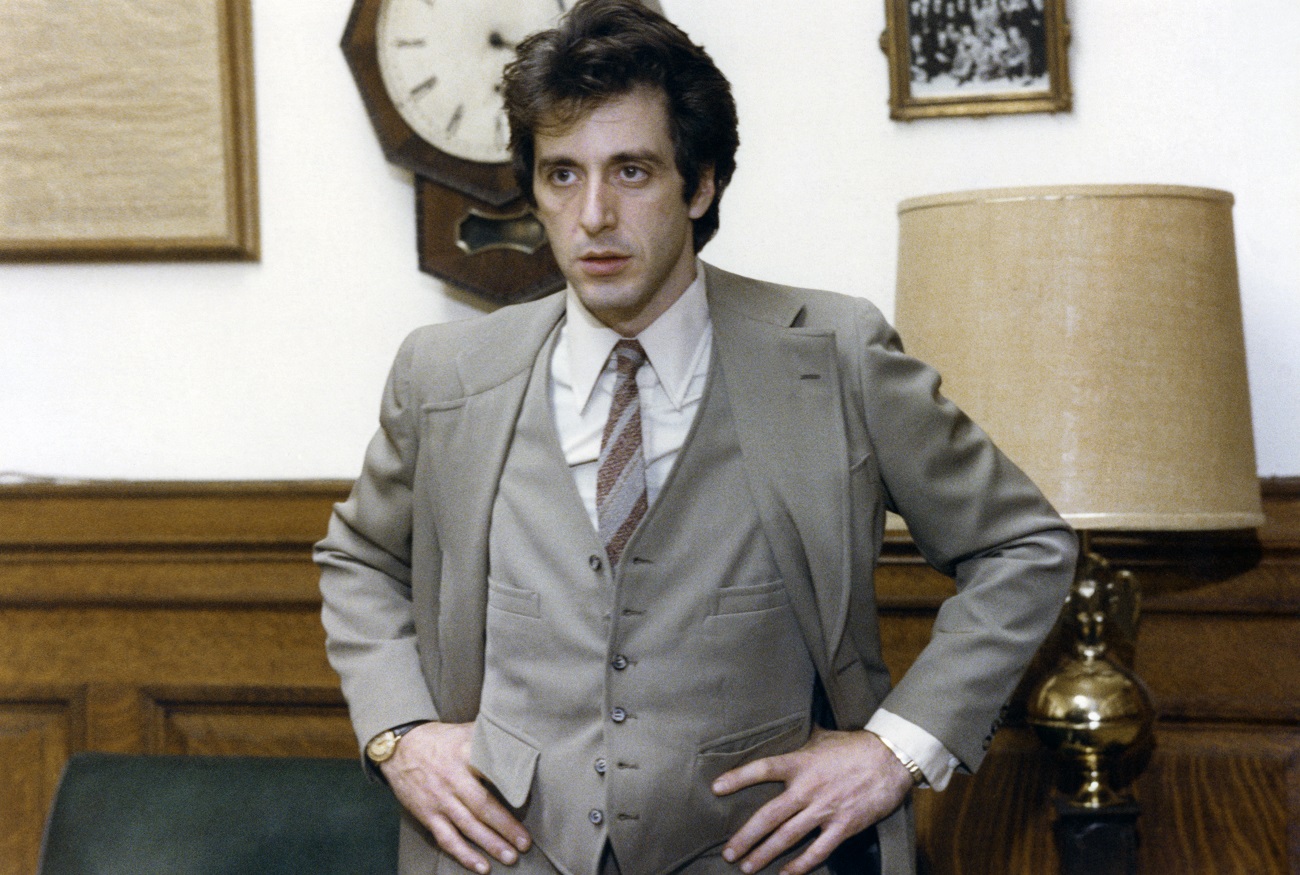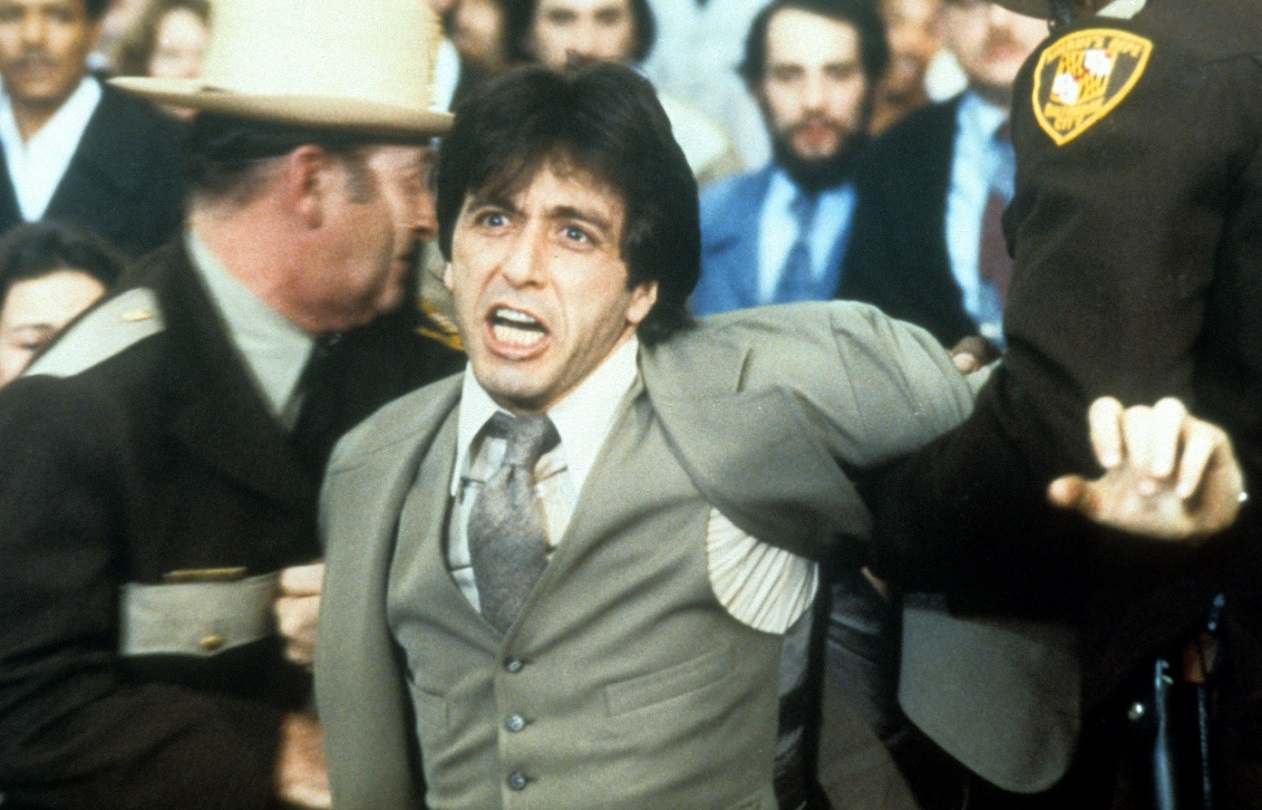Why Al Pacino Rewrote the Climactic Courtroom Scene in ‘And Justice for All’
Al Pacino, who turned 81 in April, has been on a run in recent years. There’s no other way to describe a three-year stretch that includes roles in Once Upon a Time in Hollywood, The Irishman, and the upcoming House of Gucci. And you’ll find Pacino on the screen this summer in American Traitor, which got the legendary actor back in the courtroom.
Mention the words “Pacino” and “courtroom” in the same sentence and his Oscar-winning turn in Scent of a Woman immediately comes to mind (hoo-ah!). But Pacino delivered as an attorney more than a decade prior, in Norman Jewison’s And Justice for All (1979).
In that picture, Pacino plays a defense attorney who throws out the rulebook in court one day. Even if you haven’t seen the film, there’s a chance you’ve seen this scene. (It features Pacino screaming “You’re out of order!” at a judge.) In Norman Jewison: A Director’s Life (2021), Ira Wells revealed that Pacino rewrote that scene prior to shooting.
Al Pacino didn’t think the ‘And Justice for All’ climax was realistic

On And Justice for All, Jewison was directing a script by Barry Levinson (Diner, Rain Man) and Valerie Curtin. The writers (then married) drew from real court cases and interviews with legal professionals. Yet a few scenes in the movie don’t seem entirely true to life.
That list includes the climax, in which Pacino’s Arthur Kirkland proclaims his client guilty before the court and bawls out the judge. In his Jewison biography, Wells notes that Pacino didn’t consider the scene realistic enough to perform as-written. And Jewison recalled Pacino actually rewriting dialogue days before the shoot.
“I was just shocked,” Jewison told Wells in interviews for A Director’s Life. “Pacino came to me and said he had made a few changes, and he had totally rewritten the scene. And of course it was boring! It didn’t work.”
In the end, Jewison convinced Pacino to abandon his rewrite and film the scene as Levinson and Curtin had written it. Pacino agreed, and followed Jewison’s advice about playing up the theatricality of the scene (as an experienced trial attorney would).
Pacino said he added material to his character’s dialogue in ‘American Traitor’

Pacino isn’t about to abandon his methods at this point. Speaking with Screen Rant about his character in American Traitor, Pacino said he took the same approach.
“In a courtroom scene, you always use your own sense of things and sometimes you also use your own words that just come to you,” Pacino told the outlet. “What I mean by all that is what ends up on screen is not always the words that are written in the script.”
On And Justice for All, Pacino delivered one of his signature moments by letting go and allowing himself to showboat a bit. In the following decades, viewers came to expect that approach from Pacino.


